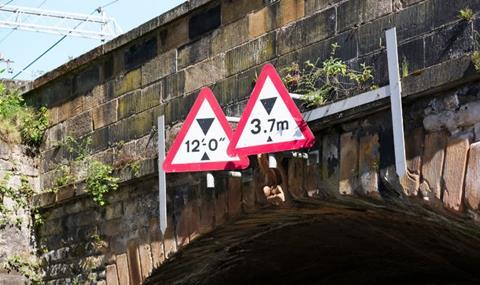
FORS has joined forces with Network Rail to try to drive down the number of bridge strikes by HGVs.
The scheme is encouraging members to heed warnings over the issue and avoid putting their operator licences at risk.
As Network Rail revealed that bridges are struck by HGVs an average of five times every day across the UK, FORS director John Hix warned: “Traffic Commissioners are able to initiate proceedings against operators whose drivers’ strike bridges, with public inquiry results putting O-licences at risk.
“We are encouraging all FORS members to download and use the free FORS Professional Bridge Smart toolkit and to make sure HGV drivers have completed a FORS Professional Bridge Smart eLearning module to prevent such incidents and continue the downward trend into 2021.”
Read more
- List of most-struck bridges revealed as Network Rail calls for HGV drivers to take more care
- Bridge strike warning in new traffic commissioner guidance
- OTC reveals details of 99 operators reported for bridge strikes
FORS Professional Bridge Smart eLearning covers the dangers of bridge strikes and avoidance techniques. It comes with a manager toolkit, which includes practical advice which can be applied to fleet operations to help reduce the risk of bridge strikes, worst-case scenario response planning, driver knowledge materials, internal communication resources and posters.
FORS said over 63,000 members have completed the module since it was launched in December 2018 and helped deliver a 13% decrease in bridge strike incidents nationally between April 2019 and April 2020 compared to the previous year.
However, Hix warned that, despite these positive results, operators and drivers must not become complacent, particularly in the winter months when HGV traffic rises to meet peak demand – a trend expected to reach unprecedented levels in light of the pandemic.
He said: “These are really positive results which I believe are a good reflection of the strong uptake of our Bridge Smart eLearning module since its launch. Yet, just like Network Rail, FORS wants to do even more to reduce incidents.
“It is important to remember that unlike some complex safety challenges faced by road transport operators, bridge strikes are almost entirely avoidable, yet they cause significant damage and huge safety concerns. The more we can do to educate drivers about the dangers of bridge strikes and how to avoid these, the better.”














